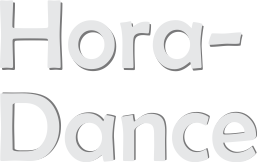
Balkans is one of the most ethnically diverse cultures of Europe. It has a complex history as it reflects the genuine importance and influence of European landforms. Churchill has described it as ‘having too much history to consume’. ‘Balkan’ means ‘mountains’ and most of the ethnic groups and cultures have been fragmented by this mountainous relief and is identified under the term ‘Balkanization’. One such ancient evidence of Balkan is the Hora Dance. With the music strands of Bulgaria, it is inevitably a part of every feast on this ancient land. According to the Balkanians, it is the Horo as it reflects the joy and sadness of the local people and their hope of assimilating to nature. Originated from the Balkans, the Hora is basically a circle dance that predates the State of Israel and many other countries. Hora, popularly performed at the celebrations such as birth and weddings, it is also known as the traditional folk dance of Romania.
Hora, also called as Horo or Oro originated from Greece as it is derived from the Greek word ‘khoros’ meaning ‘chorus or choir’. Basically, Hora evolved as an annual circle dance performed in Athens at the festival of the Greek God Dionysus. Later, Romania adopted it as a customary dance outside the church, in the town square or on other celebrations. However, as it further expanded, there were special Horas that were danced for specific occasions. As the dance gained momentum, it was adopted by the Balkans, Romanians, Macedonians, Bulgarians and many others. According to an observation, cognates for the name of Hora have been made by most of the people; the Turkish have kept the same name for the dance since years.
Hora is a circular dance performed throughout Europe. All the participants stand in a circle holding each other’s hands and stepping right with the left foot and vice versa. The circle rotates from the right at the start of the music. The participants step to the side, passing the left foot behind the right. This movement continues as the circle keeps spinning and a little hop is added as the steps go faster. Participants move towards the centre of the circle and throw their hands. They then, lower their hands and move backwards and this is repeated several times.
The melody of the Hora Dances includes lyrics, lyrics of the songs and the heroic themes that follow it. The dance has a great diversity of beats per measure which varies from 2/4, 5/8, 9/16, 11/16 and even reaching up to 12/16, 13/16 and 15/16. This is one of the reasons that the dance should be performed by skilful individuals and this skill is often developed during childhood. Originally developed by the Romanians, the dance is accompanied by musical instruments such as the cymbals, accordion and violin during wedding celebrations and festivals. During the dance, the performers join hands and use the 4–count ‘grapevine’ step. Hava Nagilah is the music selected for the dance.
Hora originated in Greece and is performed in the most parts of Europe and the Middle East, becoming the national dance of Israel. For performing Hora, traditional attire is followed by the participants. Generally, men wear long tunic tops with pants whereas women wear full skirts and colourful scarves around their neck along with belted mid–calf length dresses.
Depending upon region–to–region, Hora is classified as:
- Pravo Horo: Also known as straight Horo, it is relatively easy to perform but often leads to hypnotic state after performing for about 30 minutes.
- Paydushko Horo: It is typically known for its steps and hops. It is popular in the regions of Macedonia, Greece and some parts of Bulgaria.
- Dunavsko Horo: Performed in the city squares at every wedding and national holiday, it is one of the most beloved dances in Bulgaria.
- The Greek Sirtaki: It has its roots in the traditional Greek music and consists of slow and fast sections that follow one another.
- The Bulgarian Horo: It has its origin far back in the history. However, according to some, it has uneven beats that are peculiar to the semi–nomadic Proto–Bulgarians.
G Kowledge of | 0 Comments >>
0 Comments
Leave Comment
Your email address will not be published. Required fields are marked.